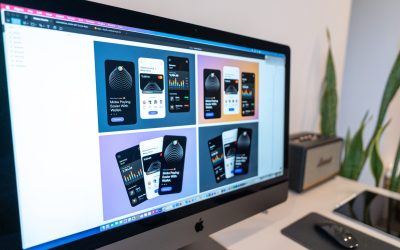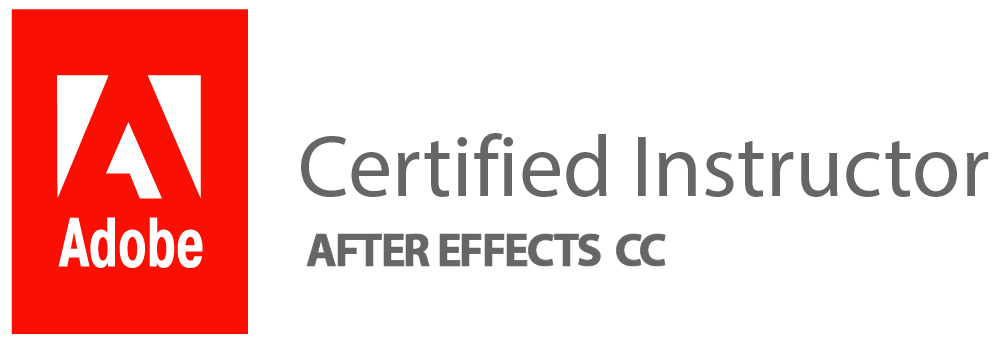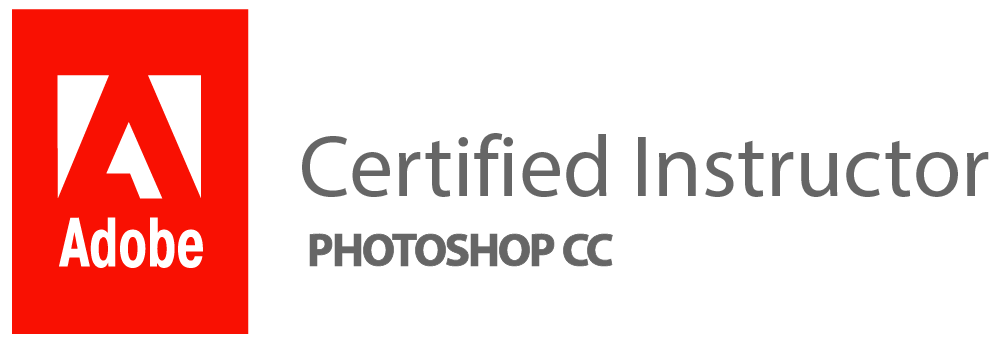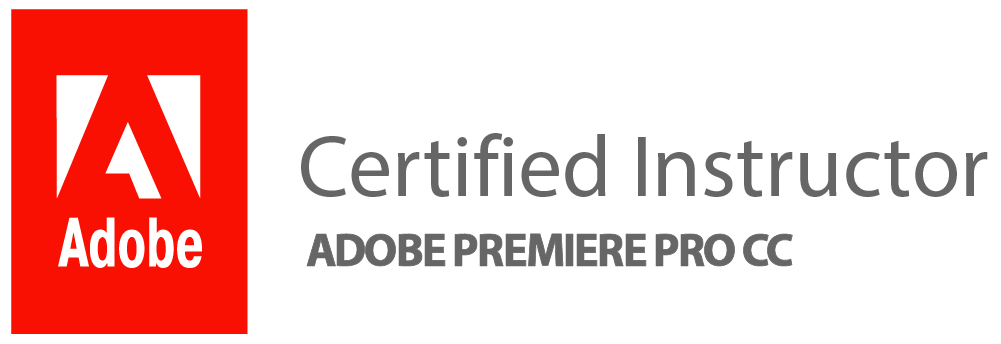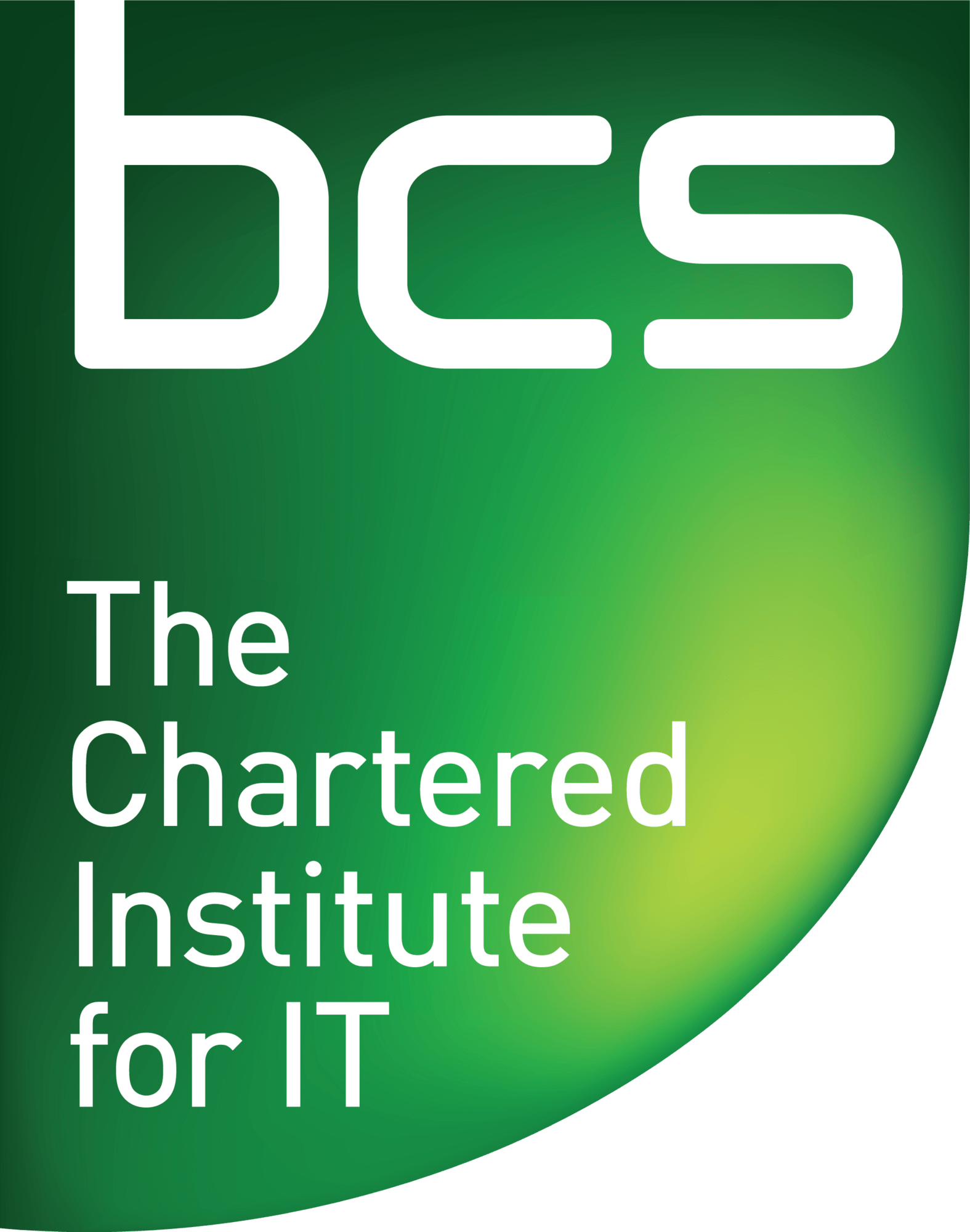What Skills Are Necessary For Beginner Graphic Designers? This article will discuss what a graphic designer and visual communication professional learn.
In graphic design and visual communication, professionals learn a variety of skills that are essential for creating effective and visually appealing designs. One of the most important skills is the ability to understand and work with different types of visual media, including images, typography, colour, and layout. By learning how to use these elements effectively, designers can create designs that communicate their intended message clearly and effectively.
Another key skill in graphic design is the ability to think creatively and innovatively. This involves being able to come up with original ideas that will capture people’s attention and engage them on an emotional level. Designers also need to be able to problem-solve effectively, whether it’s finding a way to make a design more visually appealing or figuring out how to work within a limited time or budget constraints.
Lastly, good communication skills are vital for any professional working in this field. Designers must be able to communicate effectively with clients, colleagues, and other stakeholders in order to ensure that everyone is on the same page regarding project goals and timelines. Additionally, they must be able to present their ideas clearly and persuasively in order to convince others of their value.
Graphic Design Principles:
Graphic design principles are the foundation of creating visually appealing and effective designs. These principles help designers produce works that are not only aesthetically pleasing but also communicate a message effectively. The principles include balance, contrast, alignment, proximity, emphasis, and repetition.
Balance refers to the equal distribution of visual elements in a design to achieve harmony. Contrast involves using different elements, such as colours or fonts, to create emphasis and interest in a design. Alignment is used to organize the elements in a design so that they appear connected and coherent. Proximity deals with grouping related items together for clarity and ease of comprehension.
Emphasis serves to draw attention to specific parts of a design by making them stand out from other elements. Repetition involves repeating visual elements throughout the design for consistency and unity. Understanding these fundamental principles is crucial when it comes to creating an effective graphic design that communicates its intended message clearly and meaningfully.
This section discusses the fundamentals of graphic design, including shapes, colours, typography, and graphic elements.
Graphic design is a vast field that involves various elements and principles to create visually appealing designs. The fundamentals of graphic design include shapes, colours, typography, and graphic elements. Shapes are the building blocks of any design; they can convey emotions, support the overall message of the design, and affect how people perceive it. Colours also play an essential role in designing; they can evoke certain moods or emotions that align with the message of the design.
Typography refers to the use of fonts and text styles in a design. It can significantly impact how well a message is communicated by making it more readable or aesthetically pleasing. Lastly, graphic elements such as images, icons or illustrations add visual interest to designs while conveying meaning and context.
As such, learning these fundamentals is critical for anyone interested in pursuing a career in graphic design or visual communication. A solid understanding of these basic principles will help designers create effective designs that communicate their intended messages clearly while being visually striking and memorable to their audience.
Graphic Communication Principles:
Graphic communication principles are essential elements that every designer should know and understand. These principles apply to all aspects of visual communication, including typography, colour theory, layout design, and image selection. One of the most critical principles is contrast, which refers to the difference between two elements in a design. Contrast can be achieved through variations in size, colour, texture or shape.
Another important principle is balance. Balance relates to the distribution of visual weight within a composition. An unbalanced design will feel off-kilter and uncomfortable to viewers. Achieving balance can be done through symmetrical or asymmetrical placement of elements on a page. Finally, designers must also consider alignment when creating their layouts. Proper alignment creates an organized structure for viewers to follow visually.
In summary, graphic communication principles are fundamental concepts that underpin successful designs across all media types. By understanding these principles and how they relate to one another within a composition’s context, designers can create effective visuals that communicate ideas clearly and effectively while capturing their intended audience’s attention.
How to communicate ideas through graphics, and how to create effective visuals.
Graphic design and visual communication are all about conveying your ideas through imagery. In graphic design, you will learn how to use shapes, colours, typography and other elements to create images that communicate a message or convey an emotion. Visual communication is the process of creating visual content that can effectively convey ideas, emotions or messages.
To create effective visuals, it is important to consider your target audience and what they want to see. You should also pay attention to colour schemes and contrast ratios when selecting colours for your designs. Typography is another crucial aspect of graphic design – choosing the right font can help emphasize key points in your visual content.
Overall, learning how to communicate ideas through graphics requires practice and experimentation. With time and experience in graphic design and visual communication, you can develop an eye for choosing the perfect combination of images and text that effectively conveys a message or emotion.
The Role of Graphics in Visual Communication:
In graphic design and visual communication, you learn the importance of using graphics to enhance your message. Graphics play a significant role in visual communication, as they can help convey complex information in a simple and clear manner. For instance, infographics combine text, images, and charts to present data that is easy to understand at a glance.
Additionally, graphics can evoke emotions that words alone cannot achieve. Using effective colours and imagery with strategic placement can create an emotional response from the audience that enhances the overall message of the design. Moreover, typography is another essential element of graphic design that plays a crucial role in conveying messages effectively. The typeface can influence how readers perceive messages by creating specific associations or moods based on their style.
Overall, learning how to use graphics effectively is critical in visual communication as it helps designers communicate their ideas clearly and creatively while captivating their audience’s attention through aesthetics and emotion.
The role of graphics in visual communication, from designing visuals to creating campaigns and content.
In graphic design and visual communication, you learn the importance of using graphics to convey a message effectively. Visuals can help communicate complex information in a simple and easy-to-understand way. A well-designed graphic can also draw attention to key points, making it easier for viewers to remember important details.
In addition to designing visuals for individual pieces of content, graphics also play a crucial role in creating campaigns. Campaigns often rely on consistent branding and messaging across multiple channels, including social media ads, website banners, and email newsletters. Using cohesive graphics helps tie these various pieces together and create a unified brand identity.
Finally, graphics are essential for creating engaging content that stands out from the competition. Infographics and other visually striking designs can increase engagement rates on social media platforms or blogs by presenting information in an attractive and digestible format. In conclusion, understanding the role of graphics in visual communication is vital for anyone looking to create effective marketing materials or engage their audience with compelling content.
What are the basic design principles?
Graphic design and visual communication encompass a wide range of concepts, techniques, and principles. However, there are some fundamental design principles that every graphic designer should know. The first principle is balance. Balance refers to the distribution of elements in a design in a way that creates visual harmony. There are three types of balances: symmetrical, asymmetrical, and radial.
The second principle is contrast. Contrast helps to differentiate between elements in a design by creating tension and interest. It can be achieved through variations in size, colour, texture, shape or orientation of elements within the same composition. Another basic design principle is repetition which provides consistency throughout the composition by repeating patterns or shapes.
Proximity is also important as it helps to group related elements together in a layout while adding white space between different groups gives order and clarity to the layout as well as reducing clutter. Alignment ensures that all text or images line up correctly along invisible lines on the page so they look like they belong together rather than randomly placed on the page.
Finally, there’s a hierarchy which refers to how information is prioritized within a layout; using different sizes of the font, for example, shows what’s most important while other details might be smaller or use lighter colours etc., thus helping the viewer navigate through complex visuals easily without being overwhelmed with too much detail at once.
How do elements such as balance, unity, and rhythm affect design?
In graphic design and visual communication, understanding the principles of balance, unity, and rhythm is crucial to creating effective designs. Balance refers to the distribution of visual elements within a composition. A well-balanced design creates stability and harmony for the viewer’s eye. There are three types of balance in design: symmetrical, asymmetrical, and radial balance. Each type has its unique advantages and disadvantages.
Unity is another essential element in the design as it brings together all the components into a cohesive whole. It makes sure that all the elements work together to create a clear message or purpose for the viewer. Unity can be achieved through the repetition of shapes or colours use of consistent typography or imagery style.
Rhythm is defined as a repetition pattern that creates movement or flows in a design. It helps guide viewers’ eyes across the page naturally by using patterns, lines, shapes or colours to create interest and direction. Rhythm can be used to emphasize specific areas of importance within your design while also providing structure to your overall layout. Overall these principles provide designers with valuable tools necessary for building successful designs that effectively communicate their intended messages to viewers.
How can good design principles help create aesthetically pleasing images or pages?
In graphic design and visual communication, designers learn about the principles of good design that can help them create aesthetically pleasing images or pages. These principles include balance, contrast, hierarchy, proximity, repetition, and alignment. By using these principles effectively, designers can create designs that are not only visually appealing but also functional and easy to navigate.
Balance is a key principle in designing images or pages. It refers to the equal distribution of elements on either side of an imaginary line in a design. Contrast involves creating differences between elements in a design to make them stand out from each other. Hierarchy helps establish importance among elements by giving them varying levels of emphasis. Proximity involves grouping related elements together to create a sense of continuity and unity.
Repetition is another important principle that helps tie different parts of a design together by repeating certain shapes or colours throughout the image or page. Finally, alignment refers to positioning elements within a design so that they are visually connected with each other and appear well-organized overall. By applying these principles effectively in their designs, graphic designers can create visually stunning works that are both aesthetically pleasing and easy to interact with for users.
What does colour theory teach about design?
Colour theory plays a crucial role in design as it lays the foundation for how colours can be used to create visual appeal and evoke emotions. In graphic design, understanding colour theory is essential when creating visuals that communicate effectively. The basic principles of the colour theory include hue, saturation, and brightness, which are used to create different colour schemes such as complementary, analogous, monochromatic or triadic.
Colour psychology is also an important aspect of designing visual communication materials. For instance, red conveys energy and excitement, while blue may signify calmness and stability. Pink is associated with femininity, while green may represent growth or nature. By understanding the psychological effects of colours on people’s emotions, designers can use them strategically to achieve specific goals, such as attracting attention or evoking a certain mood.
In conclusion, by learning about colour theory in design classes or through personal research, designers can improve their skills in creating appealing visual communication materials that evoke specific feelings or reactions from the audience. Understanding how colours work together will enable designers to choose appropriate colour combinations for their designs and help them achieve their desired outcomes effectively.
What layout styles work best for different types of projects?
As a copywriting assistant, it is important to understand the basics of graphic design and visual communication. One important aspect to consider is layout style. The layout style you choose will depend on the type of project you are working on.
For example, if you are designing a magazine or newspaper article, a grid layout may work best. This type of layout ensures that text and images are organized in a clean and balanced manner, making it easy for readers to follow along. On the other hand, if you are designing an infographic or poster with lots of data points, a hierarchical layout may be more effective. This allows you to prioritize information by size and colour so that viewers can quickly identify key takeaways.
Another important factor to consider when choosing a layout style is your target audience. If your project is meant for younger audiences, bold colours and playful graphics might be more appropriate than serious fonts and subdued colours typically used in business reports.
Overall, understanding different types of layouts and their respective strengths can help make projects more visually appealing while also improving their effectiveness at communicating information effectively to intended audiences.
What are the common violations of design principles to avoid when designing a project?
In learning graphic design and visual communication, one of the most important things to master is the principles of design. However, even with a solid understanding of these principles, designers can still fall into common pitfalls that violate them. One such violation is using too many fonts or colours in a single project. This can lead to a cluttered and confusing design that lacks cohesion and hierarchy.
Another common mistake is ignoring white space or negative space. White space helps give a design breathing room and allows for important elements to stand out. When designers ignore this principle, they risk overwhelming their audience with too much information or making it difficult for them to focus on the key message of the project. Finally, failing to consider accessibility when designing can also be a violation of design principles. A good designer should ensure that their project is accessible to all individuals regardless of any disabilities they may have by using appropriate contrast ratios, font sizes, and other accessibility features.
What role does typography play in effective design?
Typography is a crucial aspect of graphic design and visual communication. It refers to the art and technique of arranging type in order to make written language legible, readable, and appealing when displayed. Typography plays a significant role in creating effective designs that convey messages clearly and effectively.
Good typography makes information easy to read, understand, and retain for the reader. It helps establish hierarchy within a piece of content by making certain elements stand out while others fade into the background. Typography also sets the tone for a design and can evoke emotions or impressions in the viewer.
In addition, designers must consider practical factors such as font size, spacing between letters, line length, and contrast when selecting typography for their projects. These factors can affect how easily someone reads or comprehends the text on a page or screen. As such, choosing appropriate typography can greatly enhance overall design effectiveness in communicating ideas with an audience.
What do graphic design and visual communication involve?
Graphic design and visual communication are two closely related fields that involve the art of creating visual content. As a graphic designer, you will learn how to use various design tools like Adobe Photoshop, Illustrator or InDesign to create designs for print or digital media. These designs can include logos, brochures, posters, websites and much more.
Visual communication, on the other hand, is all about conveying a message through visual aids like images, videos or animations. This involves understanding the target audience and creating designs that effectively communicate your message. You will learn how to use typography, colour theory and composition to create visually appealing communications that grab people’s attention.
Both graphic design and visual communication require creativity as well as technical skills. You will need to have a good eye for detail and be able to work efficiently under tight deadlines. Moreover, you should be up-to-date with current trends in order to stay relevant in this ever-evolving field.
Graphic design: The process of designing a piece of art
In graphic design, the process of designing a piece of art involves multiple stages that require careful planning and execution. The first stage is ideation, where you brainstorm ideas and concepts for the project. This can be done through sketching, mind maps, or mood boards. Once you have a clear direction for the project, you move on to the creation phase.
During creation, you begin to bring your ideas to life using various design tools and software such as Adobe Photoshop or Illustrator. This stage involves creating drafts and revisions until your vision is fully realized. Finally, once your design is complete, it’s important to present it in a way that’s visually appealing and effective.
In visual communication courses, students learn not only about the technical aspects of graphic design but also how to communicate effectively with their audience through their designs. They learn about colour theory, typography, layout principles and other elements that contribute to successful designs that connect with people on an emotional level.
Visual communication: The way you communicate with others through your work
In graphic design and visual communication, you learn how to effectively communicate your ideas through images, graphics, and other visual elements. This includes understanding the principles of design, such as colour theory, composition, typography, and hierarchy.
Visual communication is all about conveying a message or idea in a clear and concise way without relying solely on text. It can be used in various settings, such as marketing materials, advertisements, product packaging, social media posts, websites and more. A strong visual message can capture attention quickly and leave a lasting impression.
Additionally, learning about visual communication also involves understanding the target audience you are communicating with. Different audiences may respond differently to certain design elements or styles. Understanding their preferences and behaviours can help you create designs that effectively engage them. In summary, mastering visual communication skills is essential for any aspiring designer looking to create impactful work that resonates with their intended audience.
Elements of graphic design: Fonts, Colour, Shape, Line, Grid, and Composition
As a copywriting assistant, I understand how important it is to have a solid foundation in graphic design and visual communication. Two of the essential elements of graphic design are fonts and colour. Fonts play a crucial role in conveying the message of any design, as they can evoke certain emotions and create specific moods. Choosing the right font for a project depends on various factors, including readability, tone, and style.
Colour also plays an integral role in graphic design. It has the power to evoke different emotions, set moods or tones for designs, grab attention, identify products/brands, create visual hierarchy within layouts and much more. Understanding colour theory is vital for achieving effective colour combinations that work well together visually.
Other elements of graphic design include shape, line, grid and composition, which are equally important to master when creating designs. Shapes can be used to convey meaning or simply add aesthetic value, while lines can create texture or provide directionality throughout an image or layout. The grid provides structure and helps designers organize their content efficiently, while composition ensures all these elements work together cohesively within a single layout. By mastering these fundamental skills in graphic design, you will be able to communicate effectively through your designs.
Types of graphics: photos, illustrations, graphs, charts
In graphic design and visual communication, students learn about different types of graphics that can be used to convey information effectively. Among the most common types are photos, illustrations, graphs, and charts.
Photos are often used in marketing materials and editorial content to create a visual impact or showcase products. They can be either stock images or custom shots that capture a specific moment or emotion.
Illustrations are another popular form of graphics that designers use to communicate ideas in a creative way. They allow for more flexibility than photos, as they can be stylized to fit any project’s aesthetic.
Graphs and charts, on the other hand, serve a more practical purpose by presenting data in an organized manner. These visual aids make it easier for people to understand complex information at a glance while also making it visually engaging.
Overall, understanding the different types of graphics is essential for creating effective designs that catch people’s attention while conveying important information clearly.
What is UI design?
UI design, or user interface design, is a crucial aspect of graphic design and visual communication. It’s the process of designing interfaces for software products or websites that users can interact with. The goal is to create an intuitive and visually appealing interface that enables users to complete tasks efficiently.
In UI design, designers focus on creating a visual hierarchy that guides the user’s eye towards important elements and information. They use typography, colour, layout, and other graphic elements to make sure the interface is easy to read and navigate. Additionally, designers must consider accessibility when creating UI designs so that people with disabilities can still use the product or website.
Overall, UI design plays a critical role in enhancing user experience. A well-designed interface can boost engagement, improve brand perception, increase conversions, and ultimately lead to greater customer satisfaction. As such, it’s an essential skill for anyone looking to pursue a career in graphic design and visual communication.
What is UX design?
UX design, or user experience design, is a crucial aspect of creating successful digital products. It involves designing digital experiences that are intuitive, user-friendly, and enhance overall satisfaction. UX designers work to ensure that users can easily navigate through digital interfaces and complete their desired actions with minimal frustration.
In graphic design and visual communication courses, you will learn skills that are key to becoming a successful UX designer. You’ll gain the ability to create visually appealing designs that also serve practical purposes for the user. For instance, you’ll learn how to use typography and colour theory effectively in order to guide users’ attention and make important information stand out on a page.
Additionally, graphic design courses teach students how to think critically about layout and hierarchy. These skills are essential for creating effective digital experiences as they help UX designers prioritize content based on its importance within an interface. By learning these foundational principles of graphic design during your studies in visual communication, you’ll have a solid foundation for transitioning into a career in UX design once you graduate.
Visual Communication
In graphic design and visual communication, you will learn the art of communicating visually through various mediums such as images, typography, videos, and animations. You will be taught to create designs that capture the essence of a message or brand while keeping it aesthetically pleasing. You will also be trained on how to use design software such as Adobe Photoshop, Illustrator, InDesign, and others.
In addition to technical skills, you will learn about colour theory and how it affects human emotions and behaviour. You will study the principles of layout design, such as balance, contrast, alignment, repetition, and proximity, in order to create effective compositions. Understanding the psychology behind visual communication is crucial for creating designs that evoke certain emotions or actions.
Visual communication is an important aspect in various industries, including advertising, marketing, publishing and web development. With the growth of digital media platforms like social media and websites becoming more popular than ever before – there has never been a better time for aspiring designers to invest their time in learning about visual communication.
Visual Communication Vs Graphic Design
Graphic design and visual communication are two closely related fields, but they differ in their focus and application. Graphic design is about creating visual solutions for specific problems, such as designing a logo or a brochure. It involves using typography, colour theory, and layout to create effective designs that communicate the desired message to the target audience.
On the other hand, visual communication encompasses all forms of communication that involve visuals, including graphic design. This field focuses on how people interpret and respond to visual messages. It involves studying human perception and behaviour to create effective visual content that communicates a message clearly.
In graphic design courses, students learn how to use various software tools like Adobe Illustrator or Photoshop to create visually appealing designs. They also learn about typography principles like kerning and leading, as well as colour theory concepts like hue and saturation.
In contrast, visual communication courses teach students about different mediums for conveying information visually – from photography to video editing – with an emphasis on understanding how people interact with those mediums. They also cover topics such as semiotics (the study of symbols) which help designers understand how different colours or shapes influence people’s perceptions.
Overall both fields share many similarities but have their unique characteristics, too, which make them stand apart from each other.
Graphic design is in demand.
Graphic design has become an essential part of the digital era, as businesses and individuals are constantly in need of visually appealing content to capture the attention of their target audience. In a graphic design course, students learn essential skills such as colour theory, typography, composition, and layout design. They also gain proficiency in popular software tools like Adobe Photoshop, Illustrator, and InDesign.
Visual communication is another crucial aspect incorporated into graphic design programs. The ability to convey messages effectively through images and graphics is a valuable skill that students develop in these courses. Students also learn about branding and marketing strategies that incorporate graphic design elements to make products or services stand out from competitors.
As more businesses shift online due to the pandemic, there has been an increased demand for skilled professionals who can create engaging visual content. Graphic designers can work with various industries ranging from advertising agencies to non-profit organizations or even start their own freelance businesses with time. As technology advances continue shaping our world, we can expect that the demand for qualified graphic designers will continue increasing over time as well.
Graphic Design And Branding
In graphic design and branding, you will learn how to visually communicate a brand identity through the use of typography, colour schemes, and imagery. You’ll gain an understanding of the principles of design and how they can be applied to create effective visual communication. With this knowledge, you’ll be able to develop brand identities that are unique, memorable, and consistent across all platforms.
Graphic design and branding courses will teach you how to create logos, marketing materials like brochures and flyers, websites, and social media graphics, among other things. You’ll learn about the importance of consistency in branding across different mediums as well as the role that graphic design plays in shaping consumer perception. By honing your skills in graphic design and branding through coursework or on-the-job experience, you’ll be equipped to craft powerful visual stories that capture attention & stand out from the competition.
Visual Communication And Branding
In graphic design and visual communication, you learn how to convey a message through the use of images, typography, and colour. These elements work together to create an overall aesthetic that represents a brand or company’s identity. Visual communication is a powerful tool for branding as it allows you to connect with your target audience on an emotional level.
When designing visuals for branding purposes, it is important to consider the values and personality of the brand. This will help guide decisions around colour palettes, typography styles, and imagery choices. A successful visual identity will be consistent across all mediums, from logos and packaging to social media graphics and advertisements.
Overall, graphic design and visual communication play a crucial role in building strong brands that resonate with consumers. By effectively communicating through visuals, brands can establish trust with their audience and differentiate themselves from competitors in crowded markets.
Web Design is in demand.
Web design is one of the most in-demand skills in today’s digital age. With the rise of technology and increasing online presence, businesses are looking to create visually appealing websites that attract customers and generate leads. Web designers play a crucial role in this process by creating engaging layouts, selecting appropriate colour schemes, and choosing typography that complements the brand image.
In a graphic design and visual communication program, students learn about different software tools used for web design, such as Adobe Photoshop, Illustrator, Sketch, or Figma. They also gain knowledge of user experience (UX) and user interface (UI) design principles to ensure that their designs are not only aesthetically pleasing but also functional for users. In addition to these technical skills, students also develop soft skills such as creativity, problem-solving abilities, attention to detail and teamwork.
Overall, learning web design through a graphic design program can lead to numerous career opportunities in various industries, such as advertising agencies or e-commerce companies. As long as businesses continue to exist online, which they will be doing on an ever-increasing scale- there will always be a demand for skilled web designers who can create beautiful sites while keeping functionality at the forefront of their designs.
Graphic design is in demand.
In a world where visual communication plays a crucial role in marketing and advertising, graphic design has emerged as an essential skill set. From creating logos to designing brochures and websites, graphic designers are responsible for making products and services look appealing to the target audience. In order to succeed in this field, it is important to have a strong understanding of principles such as colour theory, typography, composition and layout.
A certificate or diploma in graphic design usually covers these topics along with software skills like Adobe Photoshop, Illustrator and InDesign. Students also learn about branding strategies, user experience design (UX) and web development basics. However, graphic designers must constantly adapt to new technologies and trends in order to stay relevant in the industry.
Overall, there is no doubt that graphic design is currently in high demand across various sectors, including advertising agencies, publishing houses, corporate businesses and even government organizations. As long as there are brands wanting to make an impression through visual storytelling – the need for skilled graphic designers will only continue to grow.
Graphic Design Vs Web Design
In graphic design, students learn the principles and techniques of creating visual content for both print and digital media. This includes designing logos, branding materials, packaging, advertisements, posters, brochures, and other forms of printed collateral. They also gain an understanding of typography, colour theory, composition and layout.
In contrast to graphic design’s focus on static images for print media, web design involves creating dynamic content that is optimized for online platforms. Web designers use various programming languages to create interactive websites that are visually appealing as well as functional. Students in this field learn how to create wireframes and mockups using software such as Sketch or Adobe XD. In addition to learning HTML/CSS coding skills, they must also understand user experience (UX) principles in order to create websites that are easy to navigate.
While there is, some overlap between these two fields – such as the importance of effective visual communication – graphic design and web design require distinct skill sets that cater to different mediums. Ultimately it comes down to what type of visual content you want to specialize in creating – static or dynamic – which will determine your career trajectory within either field.
Graphic Design Vs Digital Illustration
Graphic design and digital illustration are two closely related fields that often get confused with each other. However, there are some fundamental differences between these two disciplines. Graphic design involves creating visual concepts using typography, images, and colour to communicate a message or an idea. The primary focus of the graphic design is to create functional designs for various applications such as logos, brochures, websites, and advertisements.
On the other hand, digital illustration is more artistic in nature and involves creating drawings or paintings using digital tools such as a tablet or computer software. Digital illustrators typically work in industries such as publishing or gaming, where they create illustrations for books, magazines, video games, and other media outlets. While graphic designers may incorporate illustrations into their work from time to time, the primary focus remains on creating functional designs that serve a specific purpose.
In terms of education and training requirements for both fields, graphic designers typically need a certificate in graphic design or visual communication, while digital illustrators may have certificates in fine art or illustration. Both fields require proficiency in industry-standard software like Adobe Photoshop and Illustrator but with different areas of focus depending on their specializations.
Graphic Design Vs Application
Graphic design and application are two different fields that overlap in some ways. Graphic design is focused on creating visual content that communicates a particular message, while application development deals with creating software programs for specific purposes. In graphic design, you will learn about typography, colour theory, composition, and layout, whereas in application development, you will learn programming languages like Java or Swift.
Both graphic design and application development require creativity and attention to detail. Graphic designers need to have a strong understanding of how different elements work together to create a cohesive image that conveys the desired message effectively. On the other hand, application developers need to know how to code efficiently and write clean code that performs well on different devices.
In conclusion, both graphic design and application development are important fields in the tech industry. While they differ in terms of their focus and skill sets required; however they complement each other as good visual content needs great software applications to be delivered smoothly across various platforms.
Graphic Design Vs Motion Graphics
When it comes to graphic design, the focus is primarily on static images and their composition. Graphic designers use various tools and software to create logos, brochures, websites, advertisements, and other visual content that can be printed or displayed on digital platforms. In contrast, motion graphics incorporate movement into visuals to create an animated or video-based experience. This involves using typography, illustrations, and other graphic elements to communicate a message through animation.
Graphic design courses teach students how to use colour theory, typography, layout design principles and software such as Adobe Photoshop or Illustrator. Students learn how these elements come together to create visually appealing designs that convey a message effectively. When it comes to motion graphics courses, they are more focused on learning about animation techniques, including keyframe animations which are used in creating videos.
In summary, both Graphic Design and Motion Graphics have their own unique style of communication visually, but the latter is more experimental with its approach to bringing static images alive through motion while also incorporating audio for a better experience.
Graphic Design Vs UI UX
Graphic design and UI UX are two different fields of study, though they share similarities. Graphic design is all about creating visually appealing designs that communicate a message through images, typography or layout. Visual communication teaches students about colour theory, composition, and image manipulation to create visually stunning designs for advertising campaigns or branding projects.
On the other hand, UI UX focuses on user interface and user experience design. Students learn how to create interfaces that make it easy for users to interact with websites or applications. They also learn how to conduct research on user behaviour and create wireframes that map out the user experience. This field places emphasis on function over form since the primary focus is usability.
During both graphic design & UI UX deal with visual elements, their objectives are vastly different from each other. Graphic designers aim to convey a brand’s message through visually compelling graphics, while UI/UX designers aim to create seamless experiences that cater to users’ needs by improving functionality & ease-of-use. Understanding these differences can help you choose the right field of study based on your interests & career aspirations.
Graphic Design Vs Branding
Graphic design and branding are two related yet distinct fields of visual communication. While graphic design typically refers to the creation of visual elements such as logos, typography, images, and layout for various media platforms, including print, digital, and social media, branding is more focused on creating and maintaining a consistent image or identity for a company or product.
In graphic design courses, students learn about the principles of composition, colour theory, typography rules and techniques for designing various types of media. They also acquire technical skills that enable them to use different software tools like Adobe Illustrator or Photoshop effectively.
On the other hand, branding courses delve into understanding brand strategy and positioning in relation to target audience preferences. It involves researching competitors’ brands and then deciding on how to differentiate one’s own brand from others by designing unique visuals that resonate with consumers while being consistent across all touchpoints. In conclusion, graphic design is an essential component in creating successful brands, but it’s only one aspect since branding encompasses much broader aspects, such as strategy development which helps companies differentiate themselves from their competitors.
Graphic Software Used By Graphic Designers: Adobe Photoshop, Adobe Illustrator, Adobe InDesign
As a graphic design assistant, it is essential to understand the various tools and software used in the industry. Graphic designers primarily use Adobe Photoshop, Illustrator, and InDesign to create stunning visuals for print and digital media.
Adobe Photoshop is an image editing software that allows designers to edit and manipulate images. It’s commonly used for designing websites, creating logos or icons, and retouching photographs.
Adobe Illustrator is a vector-based program that creates scalable graphics such as logos or illustrations. It’s perfect for creating artwork that needs to be resized without losing quality.
Lastly, Adobe InDesign is layout software used by graphic designers to create flyers, brochures, magazines or books. It allows you to combine text and graphics creatively in a single document as well as adjust typography elements like font size, leading or kerning.
In conclusion, if you plan on studying graphic design or visual communication courses, learning how these programs work will give you leverage over other candidates when applying for jobs. Knowing how they interact with each other can also increase your productivity by streamlining your design process.
Software Used By Web And App Designers: Figma, WordPress, Elementor.
In the field of graphic design and visual communication, it is essential for designers to have a good understanding and knowledge of software used in web and app designing. Figma is one such software that allows designers to collaborate on designs in real time, making it easier for teams to work together efficiently. It offers a range of features like vector editing tools, prototyping capabilities, and interactive design components.
WordPress is another popular software used by web designers as it provides a content management system (CMS) that makes website development more manageable. With its easy-to-use interface and customizable templates, WordPress allows designers to create dynamic websites with minimal coding experience. Meanwhile, Elementor is a drag-and-drop page builder plugin for WordPress that enables users to create custom layouts without needing any coding skills.
Overall, learning how to use these software programs can benefit graphic design students who are interested in pursuing careers in web or app design. It will help them stay current with industry trends and be able to effectively communicate their ideas through digital mediums.
What is a graphic designer portfolio?
A graphic design portfolio is a collection of an artist’s best design work, which showcases their creativity and technical skills. It often includes examples of logos, brochures, websites, social media graphics, packaging designs and other visual communications created for various clients or personal projects. The purpose of a portfolio is to demonstrate the designer’s ability to solve real-world design problems and communicate effectively through visuals.
In graphic design and visual communication courses, students learn how to create a strong portfolio that showcases their unique style and skillset. They learn about the importance of presenting their work in the best possible light through well-designed layouts, clear images with high resolution, concise descriptions and effective use of typography. Students also learn how to tailor their portfolios for different audiences, such as potential employers or clients, by selecting projects relevant to the specific industry they are interested.
Overall, a graphic designer portfolio serves as proof of one’s ability to create effective designs that meet client needs while adhering to industry standards. By learning how to create a strong portfolio during their studies in graphic design and visual communication programs, students can position themselves as competitive candidates for future job opportunities within the field.
What should I include in my portfolio?
When it comes to building a portfolio in graphic design and visual communication, it’s important to showcase your best work that accurately represents your skills and style. Including a range of projects that demonstrate versatility is crucial, as it shows potential employers or clients that you can handle different types of design challenges. This could include examples of branding, web design, print materials, social media graphics, or any other relevant projects.
Another aspect to consider when curating your portfolio is the story behind each project. It’s helpful to include brief descriptions of the goals of each project and how you approached solving the design problem. This gives viewers insight into your process and thoughtfulness as a designer.
Lastly, don’t forget to highlight any notable accomplishments or recognition you’ve received for your work. This could include awards won, publications featuring your designs, or positive testimonials from clients or colleagues. Including these elements helps add credibility and authority to your portfolio while giving potential clients an idea of what they can expect when working with you.
What are some tips for designing an effective portfolio?
A well-designed portfolio is essential in showcasing your skills and abilities as a graphic designer or visual communicator. First and foremost, it’s important to curate your best work and present it in an organized and visually appealing manner. Choose the pieces that demonstrate a range of styles, techniques, and mediums to showcase your versatility.
In addition to presenting your work effectively, consider including descriptions or explanations about each project. This can give potential clients or employers insight into your creative process and problem-solving skills. It’s also important to keep your portfolio up-to-date with current projects and remove outdated work.
Finally, don’t overlook the importance of the presentation itself. Whether you choose a physical portfolio book or an online platform, make sure the design is clean, easy to navigate, and reflective of your personal brand. Above all else, let the quality of your work speak for itself by creating an effective portfolio that showcases what you’ve learned in graphic design and visual communication.
Motion Graphics
Motion graphics is a subfield of graphic design and visual communication that focuses on creating animated designs. In the motion graphics industry, designers use various software and tools to create moving images that convey information, tell stories or evoke emotions. As such, motion graphics can be used in a variety of contexts, including advertising, video production, film-making, and game development.
One of the key skills you learn in motion graphics is how to communicate messages effectively through visuals. This involves understanding how colour palettes, typography and composition contribute to creating engaging designs. Furthermore, being able to conceptualize ideas quickly and translate them into visually appealing animations is crucial in this field.
Another important aspect of motion graphics is staying up-to-date with technological advancements. The industry constantly evolves with new software updates and trends emerging all the time. Therefore, keeping up with new developments helps designers stay relevant in an increasingly competitive market while also pushing the boundaries of what’s possible for animation techniques.
Motion Graphics After Effects
In graphic design and visual communication, Motion Graphics After Effects is a crucial skill that every designer should acquire. It is an animation tool that enables designers to bring their static designs to life. With this tool, designers can create animations from scratch, add motion to existing designs or videos, and even make text come alive.
In Motion Graphics After Effects, designers use keyframes to animate objects in a scene. They also use various effects and plugins available within the software to enhance their animations. For instance, they can add particles, lens flares, and other special effects to create stunning visuals.
Moreover, understanding Motion Graphics After Effects will enable designers to work with different file formats and high-quality export videos for various platforms such as social media or websites. It is an essential part of the graphic design toolkit that allows designers to communicate visually in ways that are engaging and captivating for viewers.
Digital Illustration
In the field of graphic design and visual communication, digital illustration is a crucial component. It refers to the creation of original artwork using digital tools such as Adobe Illustrator, Sketchbook Pro, or CorelDRAW. Digital illustrations are used in various fields, such as advertising, publishing, animation and gaming.
Through courses and training programs in graphic design and visual communication, students learn how to use these software applications to create engaging visuals that communicate a message effectively. These courses also teach the fundamentals of composition, colour theory, typography and other relevant skills necessary for creating effective designs. Additionally, students learn about different techniques, such as vector graphics and raster-based images, that are essential for creating high-quality digital illustrations.
Digital illustration has revolutionized the world of art by enabling artists to create stunning works with more efficiency than traditional methods. As technology evolves at a rapid pace, it is important for those interested in pursuing careers related to graphic design and visual communication to stay up-to-date with new software applications and techniques that can help them excel in their profession.


